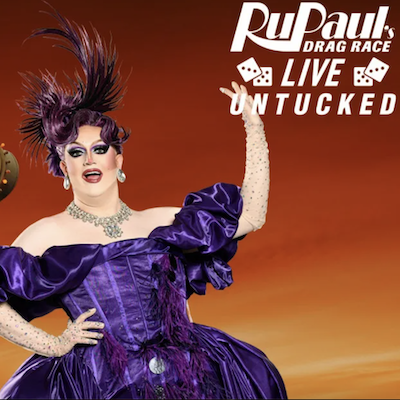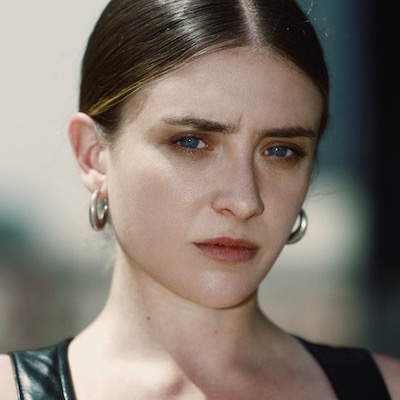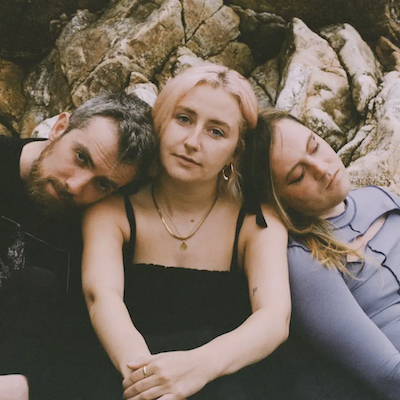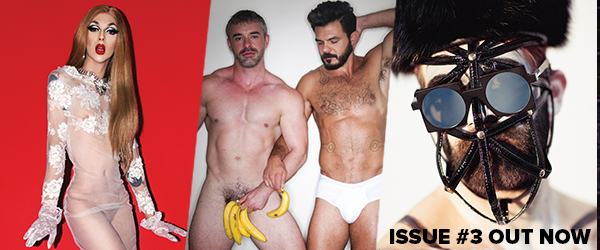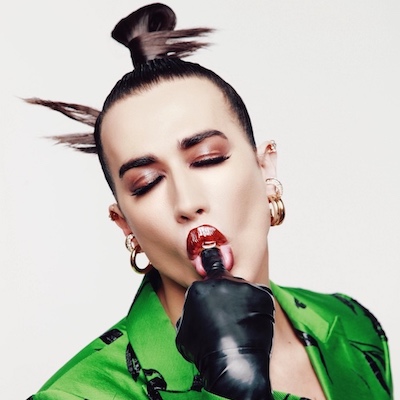
This year has already proven to be full of twists and turns. But who could have predicted that in 2021 we would be watching Drag Race España and that it would be one of the show’s best franchises?! Gagged.
Every week we are learning more about Spain’s relationship with drag but one person has been consistently causing a commotion in the Spanish nightlife – from Torremolinos to Madrid – for over twenty years and they are Divino! Whether it’s as Artistic Director, event host, performer or muse – Divino has been bringing that underground energy to Spain’s clubs and fashion scene.
In this exclusive shoot for Loverboy, Divino works with photographer Pepino Marino, while wearing head to toe Ana Locking before telling us about their journey from the ‘bizarrism’ of Torremolinos to the craziness of Chueca.
Divino, it’s great to finally speak! To introduce yourself to Loverboy readers, finish this sentence, ‘Divino is…..’
I find it difficult to summarise but if I had to choose some words they would be: forcefulness, spectacle and evolution.

When was the character of Divino born?
About this I have no doubt; it was in the underground scene of Torremolinos (Malaga) because, although it’s hard to believe now, Torremolinos was very underground in the 2000s. I started as Artistic Director in one of the most important gay clubs of all Andalucia and in a very organic way, I would leave the dressing rooms and then get onstage in character. Another moment in my evolution was when I took the microphone and began being a speaker. I am still not sure if the speaker created Divino or Divino created the speaker!
What would the Divino of today say to this newly born Divino?
Stop thinking that you have to keep learning or evolving. Open your eyes and absorb as much as you can because you have a long shimmy ahead of you!

What influence has being born in Torremolinos had on you?
I am very Torremolinos. From the underground to the sewer, taking in the music and the bizarrism.
Why do you consider Torremolinos a city with an underground culture?
Because now, with time, you realise how Torremolinos’ nightlife influenced the rest of the country’s. Torremolinos was underground without knowing that it was – as it usually happens.
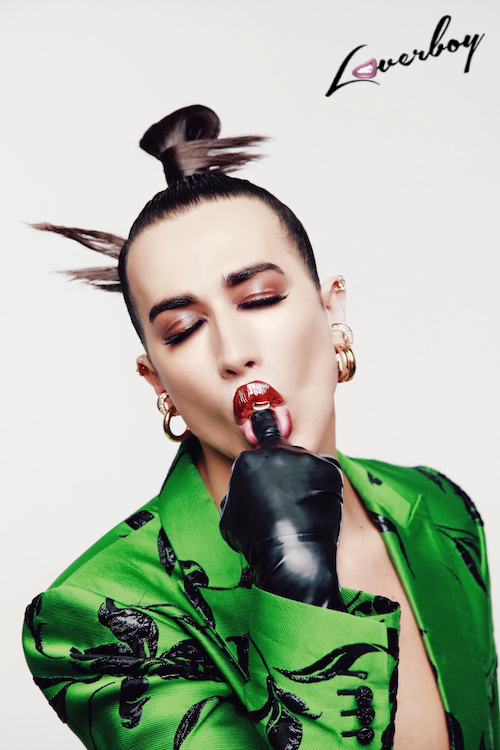
How are you influenced by the ‘night’?
In a similar footstep to Torremolinos but it also gives me the mark of survival not only at an artistic level but also a personal one. I have always known to look beyond the lights and to see the lights that shine in the suburbs. They are what inspire me most, the contrast is a constant in my art.
What does the word ‘queer’ mean to you?
Everything that comes from heteronormativity, from the reality they have created and established and in which we do not fit. I am not from the generation that has grown up with the concept of queer, but I have always known I belonged to it. To not fit in has formed my character and my personality almost entirely.
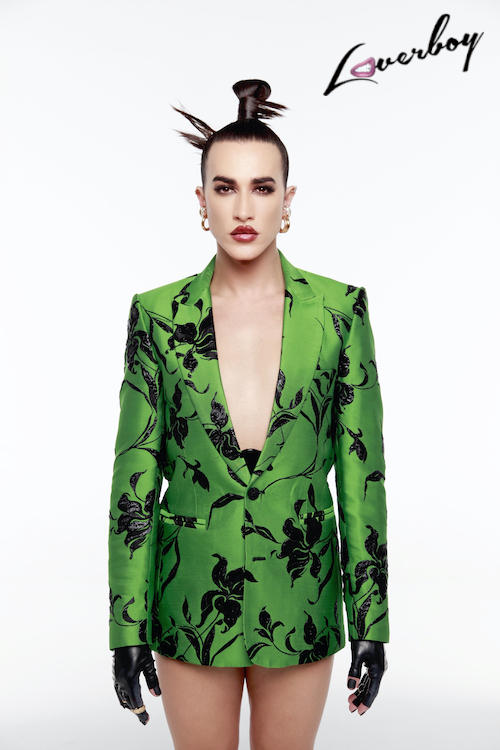
Who is your queer point of reference?
I would not know how to begin to choose one person specifically, what I am clear about is that my references are the teens and the kids that are doing a lot for the ‘normaliztion’ of the collective: with their energy, their aesthetic and little fear. In my ways they are my motor; a big part of my followers are from this generation and have made ‘Deseando Amar’ their anthem.
What message would you send to these generations?
Look at history, soak it up, do not forget it, get involved, support and keep fighting.
‘Deseando amar’ was born as a hymn, do you think it has continued to be one? When did you realise what it was?
I would not know how to answer that question but when I think that there is a public that turns to my art, my music, that shouts my song to express their feelings, it gives me a warm feeling that I have done my job well. It is then that I realise that it has stopped being just a simple song. When people get in touch with me to tell me that they have come out of the closet thanks to my song or that they have cried and shouted along with it. These moments fill me with pride.
Art, music or activism?
At this moment of my career it is activism. The means is important but, for me, if it has no message or fight, to me it is meaningless.
How does Divino connect to drag?
Well, the concept that I have of drag, I do not consider drag but I think it is the aesthetic we have to use to fight and to get our message spread further. I think we are like superheroes that put on a special suit to help our powers grow and also our security. But in general I am in a moment of my life and of my career in which I run away from labels and definitions.
What’s next for you?
To keep shouting!
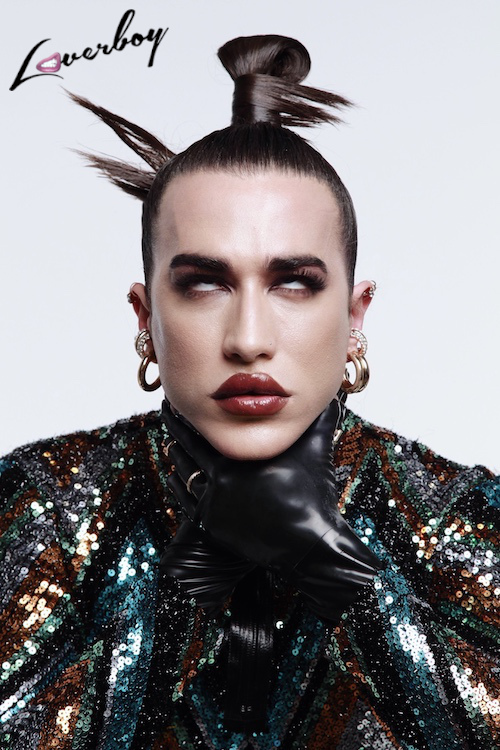
Lastly we are named after the biggest selling single of 2001, so we always ask what is your favourite Mariah Carey song?
The first Mariah song that comes to mind is ‘All I Want for Christmas’ but if I have to choose then my favourite would be ‘My All.’
Follow Divino on Instagram
Thanks also to: Enrique Gómez Leal (Interview), Pepino Marino (Photography), Ana Locking (Wardrobe), Mario Skamilla (Stylist), Alejandro Nogueroles (Stylist Assistant) & Pol Guarne (Hair & MUA) for Corta Cabeza.



